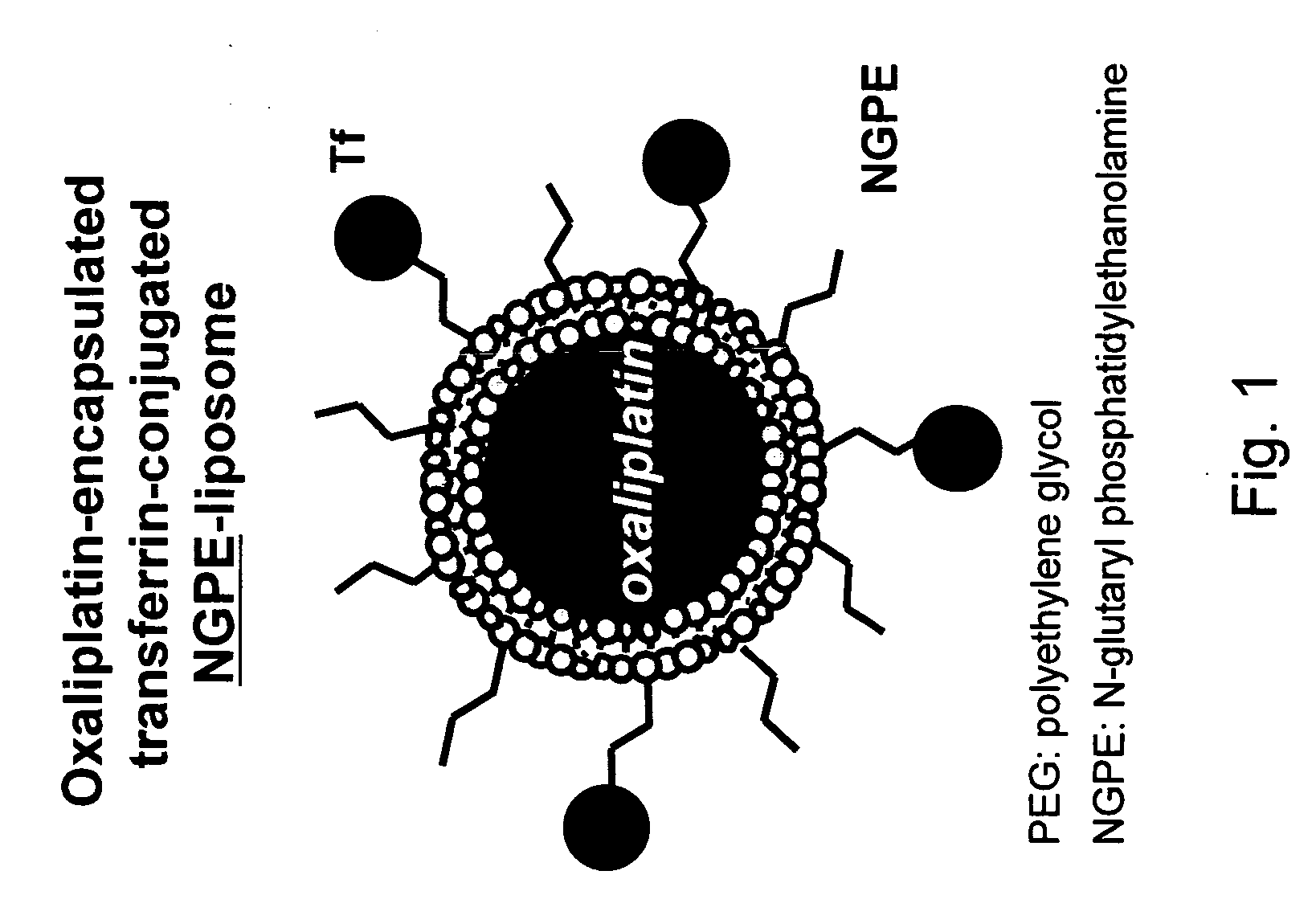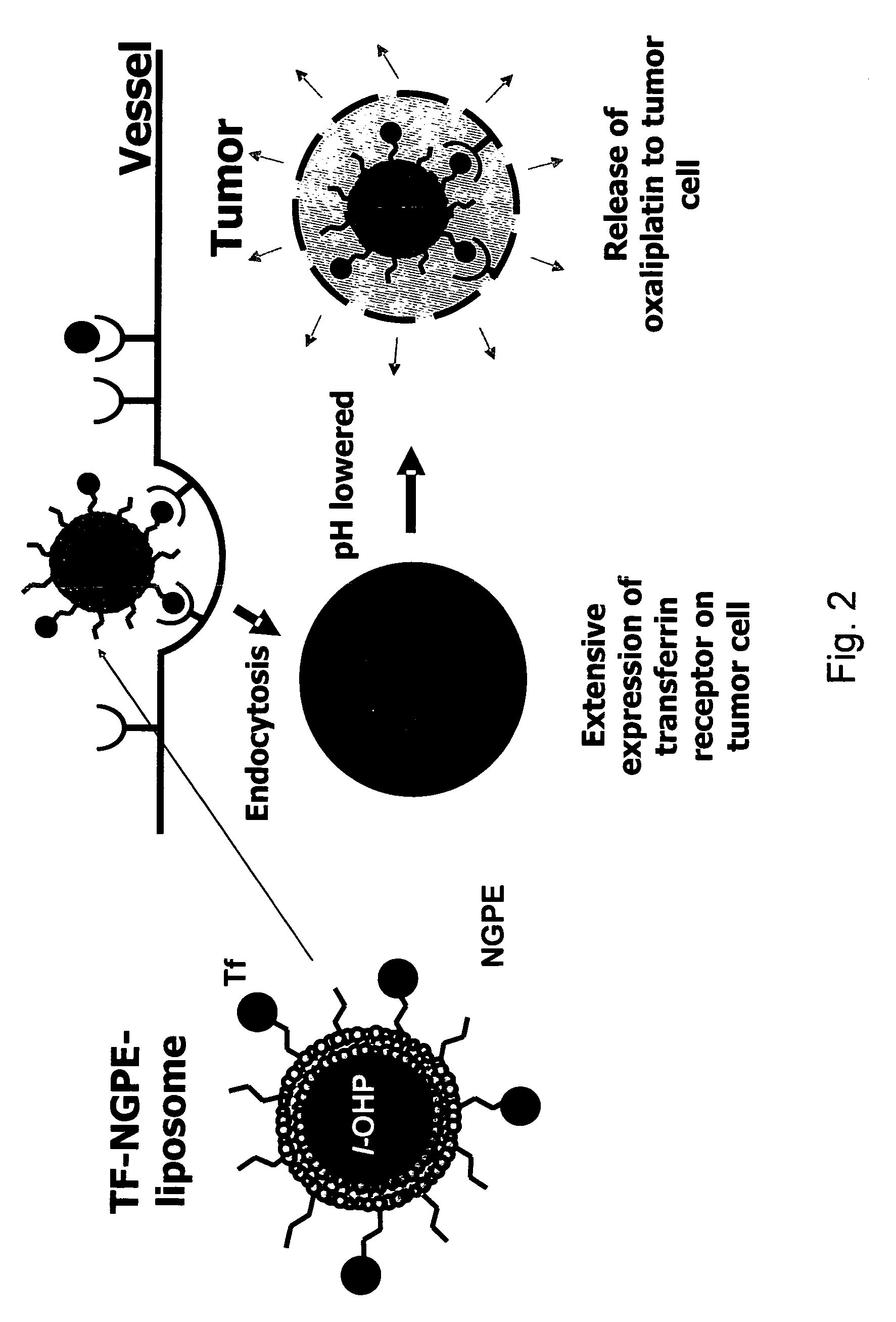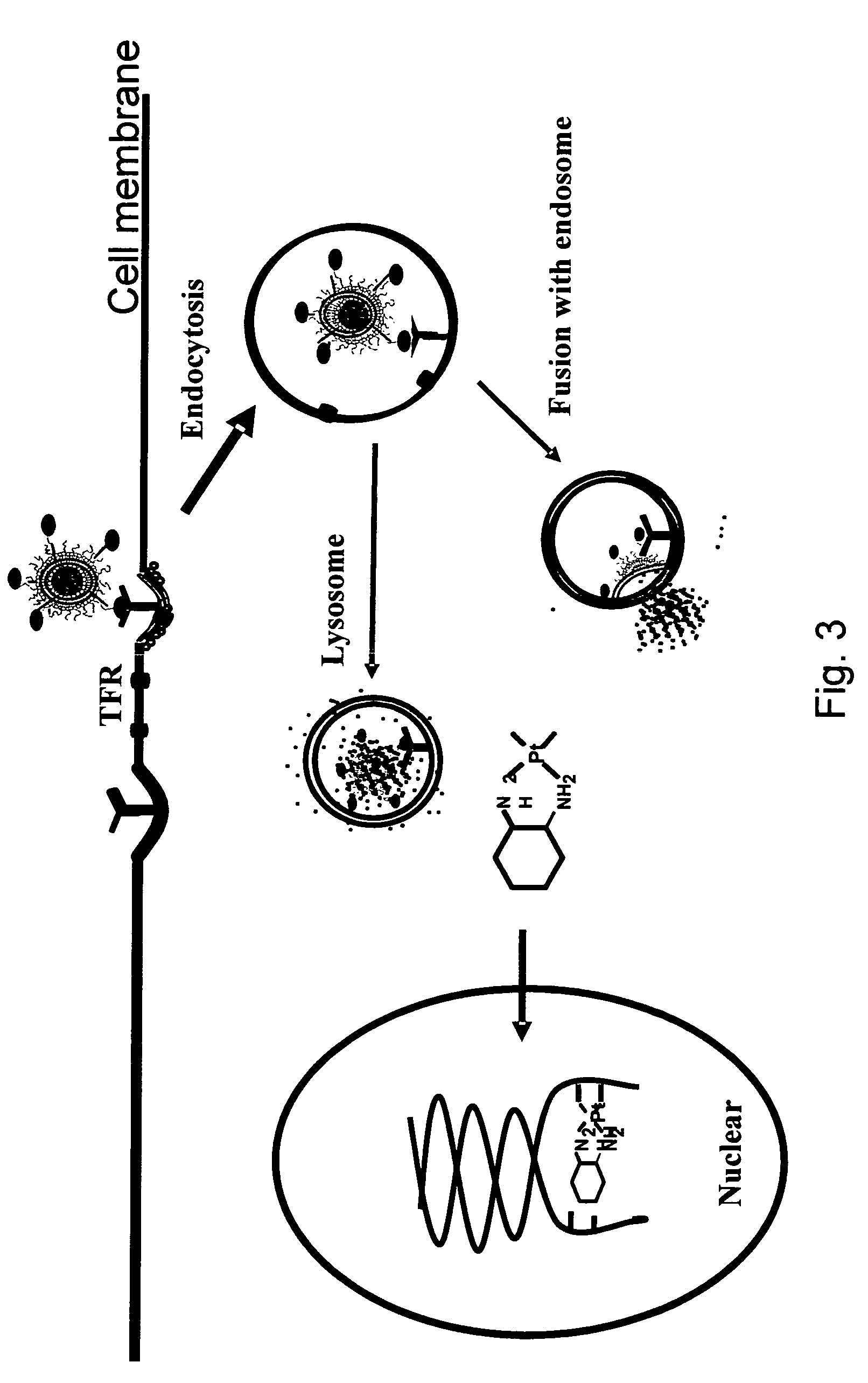Novel liposome compositions
a composition and liposome technology, applied in the field of liposome compositions, can solve the problems of reducing reducing the efficiency of drugs, and loosing their effectiveness, so as to prevent degradation and/or loss of the efficacy of drugs or labeled compounds, and reducing side effects
- Summary
- Abstract
- Description
- Claims
- Application Information
AI Technical Summary
Benefits of technology
Problems solved by technology
Method used
Image
Examples
example 1
Cytotoxicity Test for Oxaliplatin
[0517] An oxaliplatin (l-OHP) solution was prepared by dissolving oxaliplatin in a 9% sucrose solution (sucrose / distilled water) at a concentration of 8 mg / ml. The cell viability was determined using a commercially available cytotoxicity assay kit (WST-1 kit, Wako Pure Chemical Industries, Ltd., Japan).
[0518] AsPC-1 cells (provided by Dr. Hironobu Yanagie of Research Center for Advanced Science and Technology, the University of Tokyo, Japan) cultured in RPMI 1640 medium supplemented with 10% FCS (fetal calf serum; SIGMA, USA) were treated with concentrations of l-OHP solutions [200×(½)(0-10) nM] at 37° C. in 5% CO2 for 48 hours. Then, the medium was removed and a substrate (WST-1, Cell Counting Kit, Dojindo Laboratories, Japan) was added to the cells which were incubated at 37° C. in 5% CO2 for 2 hours to develop the colored product. The developed color was measured at an absorbance of 450 nm (reference wavelength: 620 nm) on an Immuno Mini NJ-2300...
example 2
Determination of the Number of Transferrin Receptors on the Cell Surface
[0520] Human normal leukocytes and human malignant tumor-derived cell lines (K562, MKN45P and HL60) were used in the experiment and obtained as follows: K562:TKG0210 (Cell Resource Center for Biomedical Research, Institute of Department, Aging and Cancer, Tohoku University, Japan); MKN45P: Dr. Hisae Iinuma, Teikyo University School of Medicine, Japan; HL60:TKG0345 (Cell Resource Center for Biomedical Research, Institute of Department, Aging and Cancer, Tohoku University, Japan).
[0521] The number of Tf (transferrin) receptors on the cell surface of each was determined by Scatchard analysis (Comp. Biochem. Physiol., 116B, 137-160 (1949), using Microsoft Excel). A solution of 125I-labeled Tf (Na-125I (PerkinElmer Japan Co., Ltd., Japan) and h-Tf (T-4132, SIGMA, USA) were combined by iodogen method (Biochem. Biophys. Res. Commun., 122, 319-325 (1984)) was added to each cell culture at different concentrations rang...
example 3
Preparation of NHS-NG-DOPE
[0525] A mass of 200 mg of NG-DOPE (Avanti Polar Lipids, Inc., USA) (Cat. No. 870242, MW 880.13)) was weighed into a conical flask with 2 legs. To the flask was added 39.2 mg NHS (Sigma, USA, MW=115.09). Next, 5 mL of chloroform / Ethyl acetate (1:1 (v / v), Wako Pure Chemical Industries, Ltd., Japan) was added and swirled to begin dissolving the NG-DOPE and NHS. Slight cloudiness observed.
[0526] Following initial mixing, a stir bar was added and the flask set up (balloon filled with nitrogen gas) to blow nitrogen gas gently into one leg of the flask and sealed with rubber stopper. Stirring under nitrogen was accomplished using a stir bar and stir plate. The second leg was sealed with a tube. The reaction was performed at ambient temperature (20-23° C.). The mixture was stirred for 5-10 minutes. A 20 μL sample of Lipid+NHS reaction mixture was set aside for use as a TLC control.
[0527] In a separate flask, a solution of DCC (99%, Aldrich, USA, MW: 206.33 g / mo...
PUM
 Login to View More
Login to View More Abstract
Description
Claims
Application Information
 Login to View More
Login to View More - R&D
- Intellectual Property
- Life Sciences
- Materials
- Tech Scout
- Unparalleled Data Quality
- Higher Quality Content
- 60% Fewer Hallucinations
Browse by: Latest US Patents, China's latest patents, Technical Efficacy Thesaurus, Application Domain, Technology Topic, Popular Technical Reports.
© 2025 PatSnap. All rights reserved.Legal|Privacy policy|Modern Slavery Act Transparency Statement|Sitemap|About US| Contact US: help@patsnap.com



